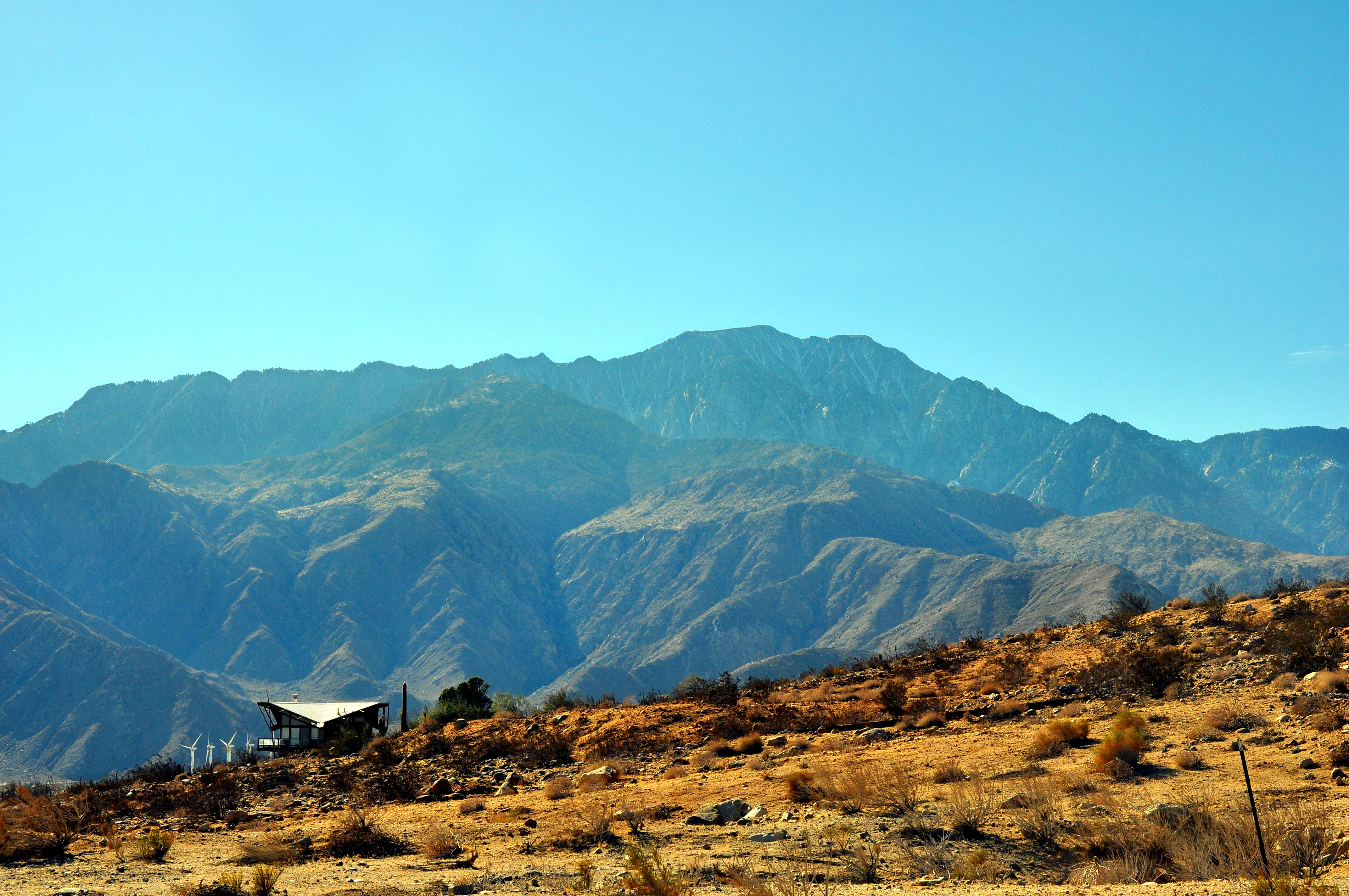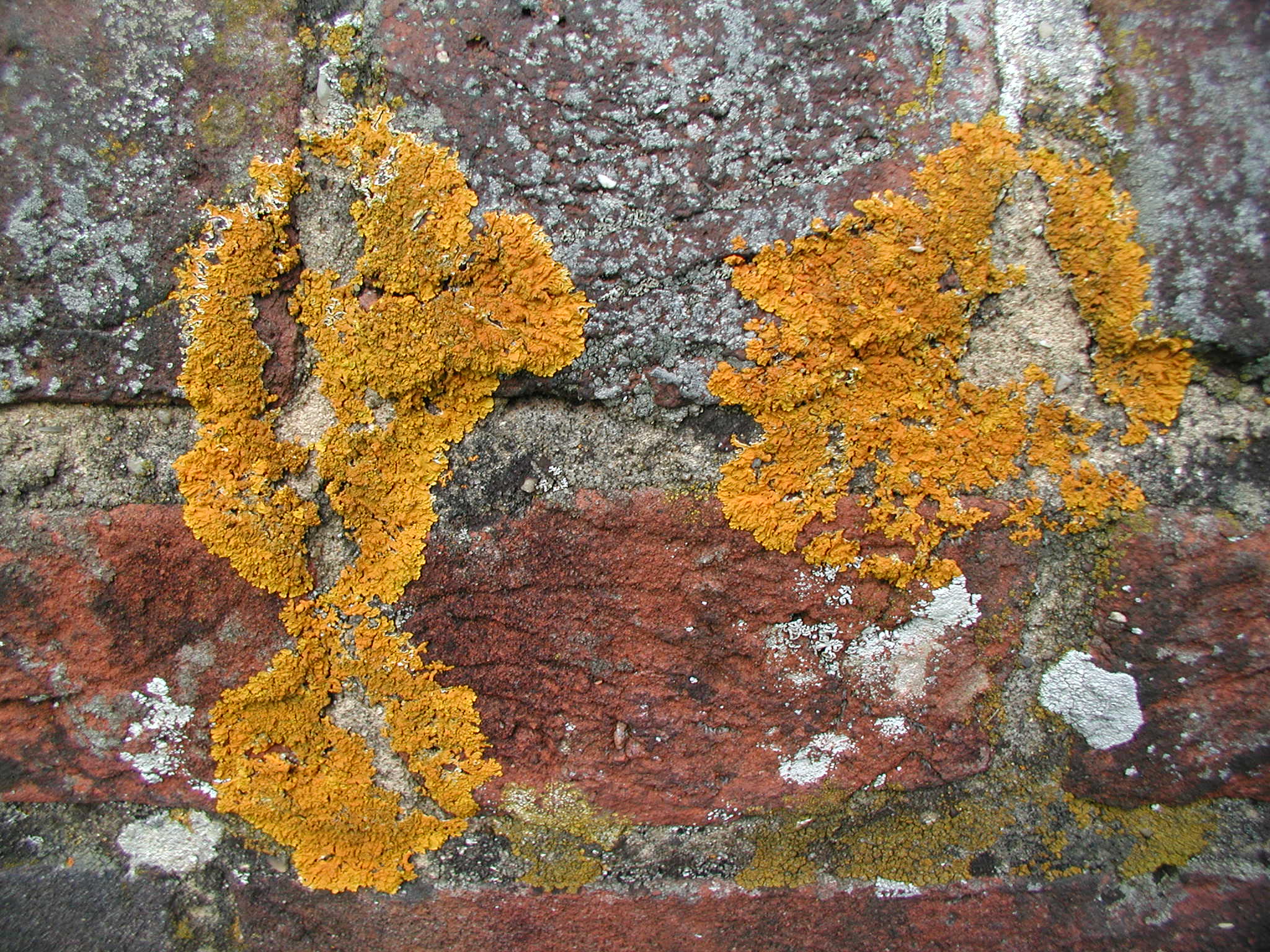|
Ramonia Vermispora
''Ramonia vermispora'' is a species of saxicolous (rock-dwelling) and crustose lichen in the family Gyalectaceae. Found in the Sonoran Desert region of the southwestern United States, it was formally described as a new species in 2008 by lichenologists James Lendemer and Karry Knudsen. The type specimen was collected in San Bernardino National Forest ( Riverside County, California), at an elevation of ; here it was found growing on granitic rock in a shaded rocky outcrop in a woodland. The lichen is only known to occur at the type locality, which is part of the San Jacinto Mountains. The specific epithet ''vermispora'' alludes to the "worm-like appearance of the ascospores". Similar species include '' R. ablephora'' and '' R. gyalectiformis'', both of which can be distinguished from ''R. vermispora'' by ascospore morphology Morphology, from the Greek and meaning "study of shape", may refer to: Disciplines *Morphology (archaeology), study of the shapes or for ... [...More Info...] [...Related Items...] OR: [Wikipedia] [Google] [Baidu] |
Saxicolous Lichen
A saxicolous lichen is a lichen that grows on rock. The prefix "sax" from the Latin means "rock" or "stone". Characteristics Saxicolous lichens exhibit very slow growth rates. They may develop on rock substrates for long periods of time, given the absence of external disturbances. The importance of the mineral composition of the rock substrate, as well as the elemental geochemistry Geochemistry is the science that uses the tools and principles of chemistry to explain the mechanisms behind major geological systems such as the Earth's crust and its oceans. The realm of geochemistry extends beyond the Earth, encompassing the ... is also important to the distribution of saxicolous lichens, but the relationship between the substrate influence on lichens, either chemical or textural, is still obscure. Communities of saxicolous lichens are often species-rich in terms of number. References Lichenology {{lichen-stub ... [...More Info...] [...Related Items...] OR: [Wikipedia] [Google] [Baidu] |
San Jacinto Mountains
The San Jacinto Mountains (''Avii Hanupach''Munro, P., et al. ''A Mojave Dictionary''. Los Angeles: UCLA. 1992. in Mojave) are a mountain range in Riverside County, located east of Los Angeles in southern California in the United States. The mountains are named for one of the first Black Friars, Saint Hyacinth (San Jacinto in Spanish), who is a popular patron in Latin America. Geography The range extends for approximately from the San Bernardino Mountains southeast to the Santa Rosa Mountains. The San Jacinto Mountains are the northernmost of the Peninsular Ranges, which run from Southern California to the southern tip of the Baja California Peninsula. The highest peak in the range is San Jacinto Peak (3,302 m; 10,834 ft), and the range is also a Great Basin Divide landform for the Salton Watershed to the east. The Coachella Valley stretches along the eastern side of the range, including the cities of Palm Springs and Rancho Mirage. San Gorgonio Pass separates the ... [...More Info...] [...Related Items...] OR: [Wikipedia] [Google] [Baidu] |
Lichens Described In 2008
A lichen ( , ) is a composite organism that arises from algae or cyanobacteria living among filaments of multiple fungi species in a mutualistic relationship.Introduction to Lichens – An Alliance between Kingdoms . University of California Museum of Paleontology. Lichens have properties different from those of their component organisms. They come in many colors, sizes, and forms and are sometimes plant-like, but are not s. They may have tiny, leafless branches (); flat leaf-like structures ( [...More Info...] [...Related Items...] OR: [Wikipedia] [Google] [Baidu] |
Lichen Species
A lichen ( , ) is a composite organism that arises from algae or cyanobacteria living among filaments of multiple fungi species in a mutualistic relationship.Introduction to Lichens – An Alliance between Kingdoms . University of California Museum of Paleontology. Lichens have properties different from those of their component organisms. They come in many colors, sizes, and forms and are sometimes plant-like, but are not s. They may have tiny, leafless branches ( fruticose); flat leaf-like structures ( [...More Info...] [...Related Items...] OR: [Wikipedia] [Google] [Baidu] |
Gyalectales
''Gyalectales'' is an order of lichen-forming fungi in the class Lecanoromycetes. It contains 5 families, 15 genera and about 550 species. Taxonomy The Gyalectales were introduced in a 1974 publication by Aino Henssen and Martin Jahns, but not formally published until 1986 by David Hawksworth and Ove Eriksson. Phylogeny An early (2002) phylogenetics study showed that the order Ostropales, as was then circumscribed, was paraphyletic, and proposed that the Ostropales sensu lato included the Gyalectales and Trapeliaceae. Although they had traditionally been considered to be only distantly related, molecular studies suggested a much closer phylogenetic relationship. As a result, of the molecular data, Kauff and Lutzoni subsumed the Gyalectales into the Ostropales, as the latter name was published earlier (1932 vs. 1986). In 2018, Kraichak and colleagues used a recently developed "temporal phylogenetic" approach to identify temporal bands for specific taxonomic ranks. Based on this ... [...More Info...] [...Related Items...] OR: [Wikipedia] [Google] [Baidu] |
Morphology (biology)
Morphology is a branch of biology dealing with the study of the form and structure of organisms and their specific structural features. This includes aspects of the outward appearance ( shape, structure, colour, pattern, size), i.e. external morphology (or eidonomy), as well as the form and structure of the internal parts like bones and organs, i.e. internal morphology (or anatomy). This is in contrast to physiology, which deals primarily with function. Morphology is a branch of life science dealing with the study of gross structure of an organism or taxon and its component parts. History The etymology of the word "morphology" is from the Ancient Greek (), meaning "form", and (), meaning "word, study, research". While the concept of form in biology, opposed to function, dates back to Aristotle (see Aristotle's biology), the field of morphology was developed by Johann Wolfgang von Goethe (1790) and independently by the German anatomist and physiologist Karl Fr ... [...More Info...] [...Related Items...] OR: [Wikipedia] [Google] [Baidu] |
Ramonia Gyalectiformis
''Ramonia'' is a genus of lichenized fungi in the family Gyalectaceae. It contains 24 species. The genus was circumscribed by Ernst Stizenberger in 1862. The genus name of ''Ramonia'' is in honour of Ramón Dionisio José de la Sagra (1798–1871), who was a Spanish anarchist, politician, writer, and botanist who founded the world's first anarchist journal, ''El Porvenir'' (Spanish for "The Future"). Species *'' Ramonia athallina'' *'' Ramonia calcicola'' *'' Ramonia chrysophaea'' *'' Ramonia cupellina'' *''Ramonia dictyospora'' *''Ramonia elixii'' *''Ramonia elongata'' *'' Ramonia eungellae'' *''Ramonia extensa'' *''Ramonia himelbrantii'' *''Ramonia leptospora'' *''Ramonia melathelia'' *''Ramonia microspora'' *''Ramonia minima'' *''Ramonia nepalensis'' *''Ramonia nigra'' *''Ramonia subantarctica'' *'' Ramonia valenzueliana'' *''Ramonia variespora'' *''Ramonia vermispora'' *''Ramonia xylophila ''Ramonia'' is a genus of lichenized fungi in the family Gya ... [...More Info...] [...Related Items...] OR: [Wikipedia] [Google] [Baidu] |
Ascospore
An ascus (; ) is the sexual spore-bearing cell produced in ascomycete fungi. Each ascus usually contains eight ascospores (or octad), produced by meiosis followed, in most species, by a mitotic cell division. However, asci in some genera or species can occur in numbers of one (e.g. '' Monosporascus cannonballus''), two, four, or multiples of four. In a few cases, the ascospores can bud off conidia that may fill the asci (e.g. '' Tympanis'') with hundreds of conidia, or the ascospores may fragment, e.g. some '' Cordyceps'', also filling the asci with smaller cells. Ascospores are nonmotile, usually single celled, but not infrequently may be coenocytic (lacking a septum), and in some cases coenocytic in multiple planes. Mitotic divisions within the developing spores populate each resulting cell in septate ascospores with nuclei. The term ocular chamber, or oculus, refers to the epiplasm (the portion of cytoplasm not used in ascospore formation) that is surrounded by the "bo ... [...More Info...] [...Related Items...] OR: [Wikipedia] [Google] [Baidu] |
Botanical Name
A botanical name is a formal scientific name conforming to the ''International Code of Nomenclature for algae, fungi, and plants'' (ICN) and, if it concerns a plant cultigen, the additional cultivar or Group epithets must conform to the '' International Code of Nomenclature for Cultivated Plants'' (ICNCP). The code of nomenclature covers "all organisms traditionally treated as algae, fungi, or plants, whether fossil or non-fossil, including blue-green algae ( Cyanobacteria), chytrids, oomycetes, slime moulds and photosynthetic protists with their taxonomically related non-photosynthetic groups (but excluding Microsporidia)." The purpose of a formal name is to have a single name that is accepted and used worldwide for a particular plant or plant group. For example, the botanical name '' Bellis perennis'' denotes a plant species which is native to most of the countries of Europe and the Middle East, where it has accumulated various names in many languages. Later, the plant w ... [...More Info...] [...Related Items...] OR: [Wikipedia] [Google] [Baidu] |
Type Locality (biology)
In biology, a type is a particular specimen (or in some cases a group of specimens) of an organism to which the scientific name of that organism is formally attached. In other words, a type is an example that serves to anchor or centralizes the defining features of that particular taxon. In older usage (pre-1900 in botany), a type was a taxon rather than a specimen. A taxon is a scientifically named grouping of organisms with other like organisms, a set that includes some organisms and excludes others, based on a detailed published description (for example a species description) and on the provision of type material, which is usually available to scientists for examination in a major museum research collection, or similar institution. Type specimen According to a precise set of rules laid down in the International Code of Zoological Nomenclature (ICZN) and the International Code of Nomenclature for algae, fungi, and plants (ICN), the scientific name of every taxon is almos ... [...More Info...] [...Related Items...] OR: [Wikipedia] [Google] [Baidu] |
Crustose Lichen
Crustose lichens are lichens that form a crust which strongly adheres to the substrate (soil, rock, tree bark, etc.), making separation from the substrate impossible without destruction. The basic structure of crustose lichens consists of a cortex layer, an algal layer, and a medulla. The upper cortex layer is differentiated and is usually pigmented. The algal layer lies beneath the cortex. The medulla fastens the lichen to the substrate and is made up of fungal hyphae. The surface of crustose lichens is characterized by branching cracks that periodically close in response to climatic variations such as alternate wetting and drying regimes. Subtypes * Powdery – considered as the simplest subtype due to the absence of an organized thallus. :The thallus appears powdery. :E.g. Genera '' Lepraria'', ''Vezdaea'' * Endolithic – grows inside the rock, usually in interstitial spaces between mineral grains. The :upper cortex is usually developed. :E.g. Genus '' Lecidea'' * Epi ... [...More Info...] [...Related Items...] OR: [Wikipedia] [Google] [Baidu] |





.jpg)
.jpg)
